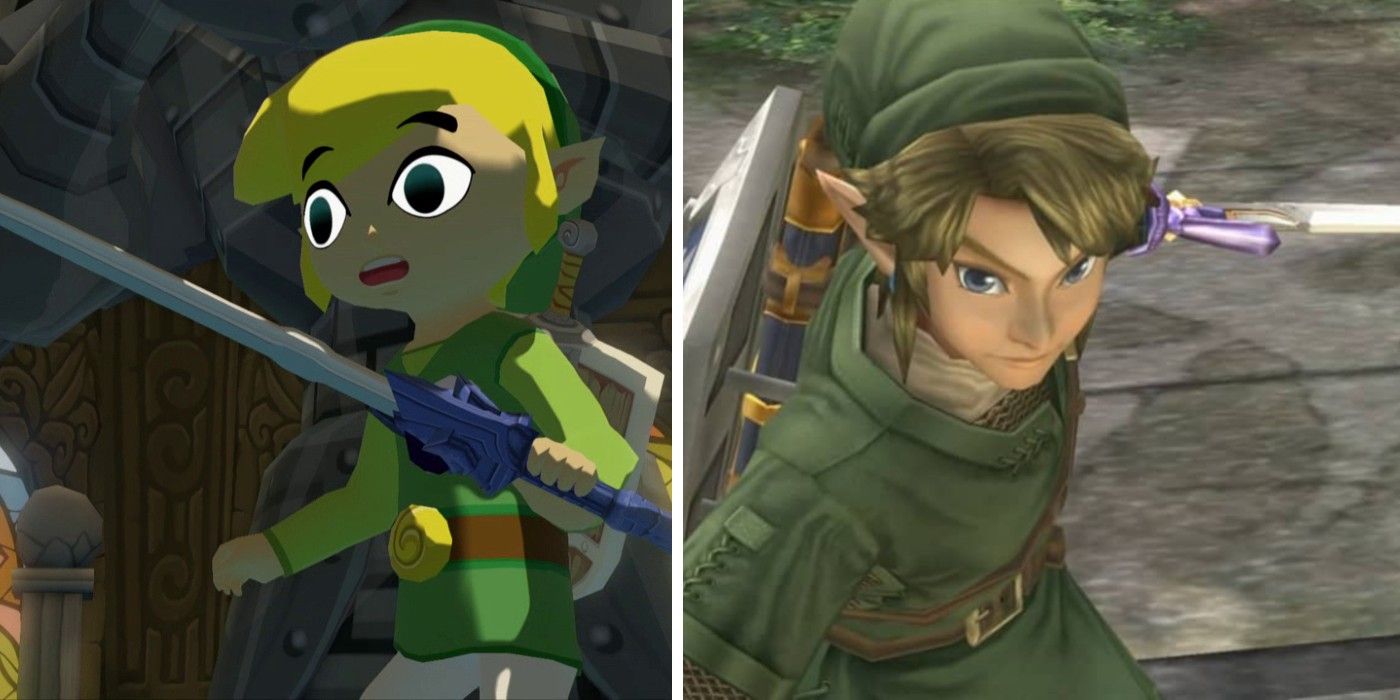Although it certainly has fans today, the GameCube was one of Nintendo's least commercially successful home consoles. Many gamers weren't enthused about some of the platform's more experimental titles, and The Legend of Zelda: The Wind Waker was a great example of this. It might be looked upon as one of the better Zelda games today, but Wind Waker sold poorly enough that its GameCube sequel ended up being scrapped in favor of Twilight Princess.
Wind Waker took a new approach to the Zelda franchise from multiple directions. The game takes place in a vast ocean dotted with islands players can sail to and from, which was radically different from the land-based medieval kingdoms the series was known for. Arguably the biggest difference Wind Waker brought to the table, though, is its cell-shaded art style, which was reused in many other Zelda titles, such as the many multiplayer Zelda games.
When it released on Nintendo 64 in 1998, Ocarina of Time took the industry by storm with its innovative camera controls and engaging story. Many players were enthralled with the direction the series was headed in, eagerly awaiting a graphically superior successor on GameCube. The darker themes and aesthetic of the N64 titles seemed to solidify that Zelda rested alongside Metroid as one of Nintendo's more mature franchises, with realistic art styles and adult themes. With this context in mind, it makes sense that Wind Waker's cartoony look upset Zelda fans in the early 2000s.
Wind Waker Originally Had A GameCube Sequel Before Twilight Princess
According to DidYouKnowGaming? on YouTube, Wind Waker was originally planned to get a sequel on the GameCube. Nintendo attributed Wind Waker's poor sales to its aesthetic, since American players, in particular, were craving a more realistic-looking Zelda game. Series producer Eiji Aonuma claimed Wind Waker 2 was in the planning and early development stages for about a year before the project was changed into the realistic Zelda fans had been hoping for.
This new, realistic Zelda ended up becoming Twilight Princess, which is known for its gritty look. Even though it sold much better than Wind Waker, its art style was hardly carried on, while Wind Waker's was reused several times. Games like Minish Cap and Wind Waker's DS sequel, Phantom Hourglass, used its initially hated look. Twilight Princess Link was cut from Super Smash Bros. Ultimate, but Toon Link continues his perfect attendance since debuting in Super Smash Bros. Brawl. It's a shame The Legend of Zelda: The Wind Waker's cell-shaded style was the demise of its potential GameCube sequel, but at least Twilight Princess ended up being a stellar game too.
Source: DidYouKnowGaming?

